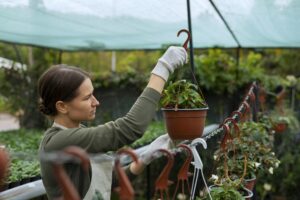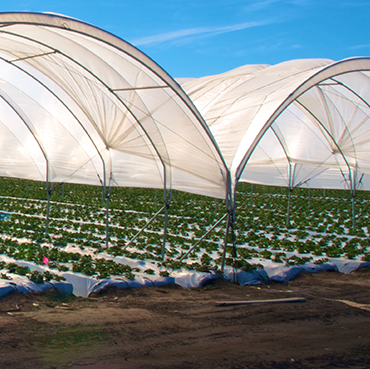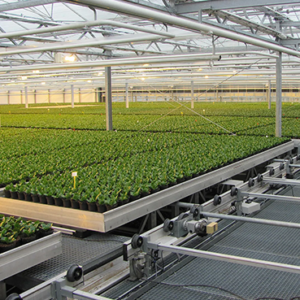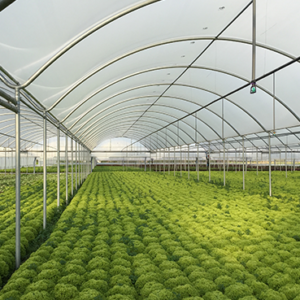
White Plastic Sheeting for Gardens: Secret to Healthier Plants & Better Light Control
Gardening is not just a science, in fact it’s an

Normally when we visualize a greenhouse, what do we imagine in our minds? A green structure that is filled with greenery, warmth and full of life. Whatever type of a farmer you are, the type of material for walls and roof you use plays an important part in the greenhouse. In the current era, only one material is making its place in the gardening world which is greenhouse sheeting polycarbonate.
If you are new to this concept or unheard-of polycarbonate sheeting, this blog is informative for you. Let’s just look into why modern farmers prefer greenhouse sheeting polycarbonate.
Polycarbonate sheeting has many benefits for a gardener but before getting into that one must know what exactly greenhouse sheeting polycarbonate is. Polycarbonate sheeting, as the name suggests, is a sheet which is very lightweight and easy to use. It is very resilient and can withstand impacts from rain and wind. Polycarbonate is basically a type of thermoplastic. It can be effective against extreme temperatures or ultraviolet rays. Greenhouse sheeting polycarbonate typically comes in two forms, single layer and multilayer polycarbonate.
Single Layer Polycarbonate: Single layer polycarbonate has a single flat or grooved sheet which is transparent and very strong.
Multi Wall Polycarbonate: Multi wall polycarbonate is used in many situations because it has ribbing which improves light diffusion and enhances insulation.
Single layer polycarbonate and multi wall polycarbonate both have their own advantages. It depends upon the gardener what is being grown and where they are located.
One of the biggest reasons growers are switching from glass or polyethylene to greenhouse sheeting polycarbonate is its unmatched strength.
Polycarbonate is virtually unbreakable. It’s about 200 times stronger than glass and far more resilient than flexible polyethylene film. That means:
Whether you’re battling strong winds, falling branches, or the occasional stray soccer ball, greenhouse sheeting polycarbonate is up to the task.
We are taught from the start that plants need sunlight for photosynthesis. But not every kind of sunlight is good sunlight. For example, direct or harsh rays of sunlight can destroy the plant. This is why greenhouse sheeting polycarbonate is very useful; it does not magnify the sunlight on plants; rather, it distributes and diffuses light evenly across the greenhouse, ensuring equal growth and consistent sunlight for all plants.
Growing in colder climates? Want to extend your growing season into fall or even winter? Then insulation becomes a key factor in your greenhouse material choice.
Here’s where greenhouse sheeting polycarbonate leaves glass in the dust. The multi wall design of certain polycarbonate panels traps air between layers, acting like double-paned windows. This thermal insulation helps to:
Not only does this create a more stable environment for your plants, but it also lowers your energy costs, a huge bonus for commercial growers.
While ultraviolet light can be detrimental to humans and other animals, it can cause damage or stress to your plants and materials within the greenhouse as well.
Polycarbonate sheets are generally coated with a UV protective layer to protect the plants and materials inside the greenhouse, serving a double purpose:
All this makes greenhouse sheeting polycarbonate a wise long term investment. Whereas polyethylene film may have to be replaced in 3 to 5 years, a UV coated polycarbonate can last 10 to 20 years+, with minimal maintenance.
Let’s face it: installing a greenhouse shouldn’t be back breaking work. One of the major perks of polycarbonate is how lightweight it is compared to glass. This makes it easier to:
In fact, many DIY greenhouse kits today come pre fitted with greenhouse sheeting polycarbonate because it simplifies the build and keeps the structure stable without requiring heavy duty framing.
Polycarbonate sheeting is a material which cannot break like glass, which becomes dangerous shards, causing injury and leaving plants exposed.
Polycarbonate, on the other hand, doesn’t shatter. If it does break (under very rare and extreme conditions), it cracks without sharp edges. For families, schools, or farms with high foot traffic, greenhouse sheeting polycarbonate offers a much safer alternative.
At first, polycarbonate material may seem a little expensive compared to glass or traditional polyethylene film. But when we measure the cost in terms of benefits, lifespan, energy savings, and protection, greenhouse sheeting polycarbonate proves its worth.
Many growers find that the upfront cost pays off in just a few seasons thanks to:
In other words, it’s not just a purchase, it’s an investment.
| Feature | Polycarbonate | Glass | Polyethylene Film |
| Impact Resistance | Very High | Fragile | Moderate |
| Light Diffusion | Soft and Even | Harsh in direct sun | Moderate |
| Insulation Value | Excellent | Poor | Moderate |
| UV Protection | Built-in | Needs added film | Limited |
| Installation Ease | Lightweight | Heavy & fragile | Easy |
| Longevity | 10 to 20 years | 5 to 10 years | 2 to 4 years |
| Maintenance | Low | Moderate | High (frequent replace) |
Polycarbonate may be durable and under low maintenance in terms of usage, but a little regular maintenance can go a long way. To help you gain the most value from your greenhouse sheeting polycarbonate, consider the following care recommendations:
By keeping up with this minimum maintenance work, your greenhouse will be able to operate for many years to come.
Whether you’re just starting or scaling up, greenhouse sheeting polycarbonate is versatile enough for:
It’s suitable for almost any climate and crop type, making it a universal solution for growers of all kinds.
If you are really eager and serious about starting to garden, one must focus on better materials than glass or polyethylene film. Polycarbonate provides better security, insulation, amazing strength, and most of all is a long lasting material. It is a more cost effective material in the gardening industry than glass or polyethylene.
Even if you are building your first greenhouse or upgrading your old one, greenhouse sheeting polycarbonate will not only give you a better environment but also make your and your plants’ lives easier.
Explore high quality greenhouse sheeting polycarbonate products today and build a greenhouse that grows with you. Invest in better materials, better growth, and better peace of mind.
This sturdy, lightweight polyethylene is utilized for the top and walls of greenhouses.
Usually 10 to 20 years with little upkeep.
Yes, it retains heat well and provides good insulation.
Yes actually, it is portable and ideal for DIY greenhouse constructions.
Yes, it has built in UV protection for plants and materials.

Gardening is not just a science, in fact it’s an

The success of your greenhouse largely depends on the type

Greenhouse plastic isn’t just a protective covering—it’s a game-changer for